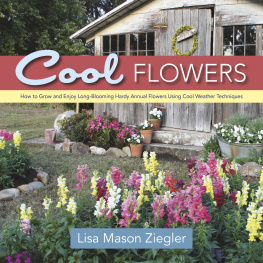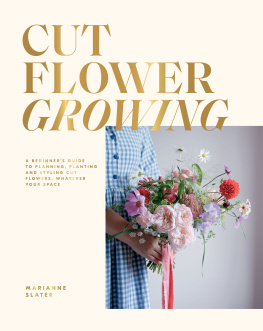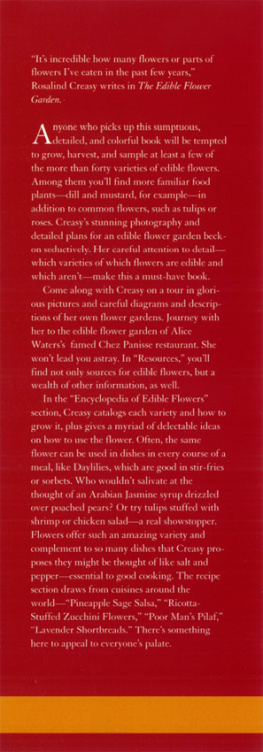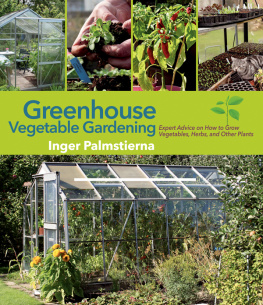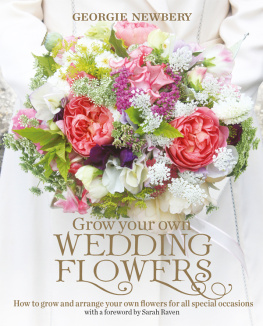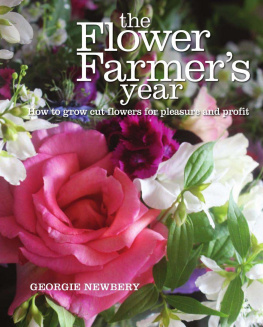The Cut Flower Patch
Grow your own cut flowers all year round

Louise Curley
photography by
Jason Ingram

First published in 2014
by Frances Lincoln Ltd, 7477 White Lion Street, London N1 9PF
www.franceslincoln.com
This ebook edition first published in 2014
The Cut Flower Patch
Copyright Frances Lincoln Ltd 2014
Text copyright Louise Curley 2014
Photographs copyright Jason Ingram 2014, except those as listed on page
Garden plans copyright Louise Curley 2014
All rights reserved
This ebook is copyright material and must not be copied, reproduced, transferred, distributed, leased, licensed or publicly performed or used in any way except as specifically permitted in writing by the publishers, as allowed under the terms and conditions under which it was purchased or as strictly permitted by applicable copyright law. Any unauthorised distribution or use of this text may be a direct infringement of the authors and publishers rights, and those responsible may be liable in law accordingly
A catalogue record for this book is available from the British Library
Digital edition: 978-1-78101-142-3
Softcover edition: 9-780-71123-475-8
Contents
Introduction

My cut flower patch is a special place. I am writing this on a bleak, midwinters day, and the plot may not look very remarkable at the moment. However in a few months time the bare patch of ground will slowly start to transform into a veritable feast of flowersa colourful patchwork that thrills me every time I see it. This is not an area that was designed to be a garden. Instead I created a space to grow flowers, which I could then cut and bring into my home.
I have always loved having flowers in the house, but five years ago I stopped buying them. The flowers on offer were appealing to me less and less; the style of the bouquets and the choice of blooms were just not what I was looking for. There was also a more pressing reason for no longer adding a bunch of flowers to my shopping trolley. We had just bought our first house and, with decorating to do and a garden to redesign, there were other priorities for our money. It was disappointing though to have our own home at last and not be able to fill it with flowers. Around the same time I came across an article about the damage the international trade in cut flowers was doing to the environment, and the poor working conditions the growers experienced. I was also becoming increasingly interested in growing our own fruit and vegetables and using our local farmers market to do our shopping. All of these factors came together, and it seemed that the logical next step was to grow my own flowers.

At first I did this in raised beds in my back garden and then, when I took on an allotment, I decided to devote two beds on the plot to cut flowers. I was surprised at how little space I needed to produce flowers to have throughout the house from early spring to mid-autumn. Initially I made quite a few mistakes, but each year I learned which plants gave me the most flowers, which were easiest to grow and which lasted the longest once cut. I discovered that, just like digging up my own potatoes or podding my own peas, the satisfaction from growing, cutting and arranging my own flowers was huge. Every week through the spring, summer and into autumn I now pick and fill several buckets with flowers. I would never have been able to afford this number of flowers if I were to buy them.

Scented daffodils are the perfect alternative to the ubiquitous red rose for Valentines Day. Grow them on your cutting patch or buy them from specialist local growers.
Growing cut flowers became so addictive that I started to look at what plants would produce attractive seed heads, which I could use in autumn and winter once the flowers were no longer appearing. It was not just the happiness that growing the flowers brought meI felt good because I knew I was doing something beneficial to the environment.
Every year billions of pounds are spent on cut flowers. Flowers make us feel better. They are the first thing we think of buying for special events or to cheer someone up; they brighten up a room and maybe even fill it with scent. But something has happened to the flowers we buy. Just like so much in our modern lives they have become part of big business. Large flower farms in South America and Africa grow plants on vast scales to supply the ever-increasing demand for cheap blooms across the globe all year. Exotic flowers may grace our living rooms whenever we want them.
While it might seem that we now have a wide choice of flowers, the cut flower trade in fact suffers from the same problems that affect the food industry. Just as fruit and vegetables are grown for their shelf life and ability to survive the distribution chain, so too are flowers. Fruit and vegetables have been bred for yield and uniformity, and this desire for perfection has also crept into the cut flower industry.
Because we can buy carnations (Dianthus) and lilies year-round, we have lost the seasonality that was once so much a part of flower growing and buying. Never is this seen more than on St Valentines Day, when millions and millions of dark red roses are sold. They have become a commodity just like everything else, and yet, while many of us have realised that buying local and seasonal food is not only good for us but also the planet, it seems that the origins of the flowers we buy is less important.
It will not just be you who will love your cut flower patch. The flowers will be an excellent source of pollen and nectar for a whole range of insects.
Environmental dilemma
It is estimated that more than 80 per cent of blooms available to buy in the United Kingdom are imported, and because of their perishable nature many are air-freighted from the Middle East, Africa and Central and South America. An average-sized bouquet that you might pick up in a supermarket could have travelled 20,00025,000 kilometres by the time it reaches your home.
However there is not just this obvious global impact on the environment. Flower farms in countries such as Kenya and Columbia are enormous, covering vast tracts of land. Growing on this scale makes it possible to produce cheap flowers, but any sort of intensive agriculture has its problems. Vast quantities of water are required to nurture the flowers, and this is putting pressure on a precious resource.



